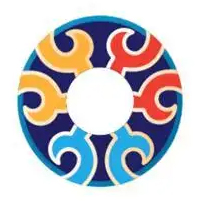The Inheritance Story behind the Qinghua Treasures: Jingtailan Peace Dove Plate.
The Dunhuang culture is the result of long-term exchanges and integration between Chinese civilization and various other civilizations, showcasing the confidence of Chinese culture. However, how to inherit and carry forward this precious heritage of Dunhuang culture in an orderly manner has become an important issue facing our era. To promote traditional culture, it is necessary to keep pace with the times, making it a key issue to integrate traditional culture into modern design. The Great Plate of Cloisonné Enamel and Peace Pigeon, as China's first national gift, have provided excellent answers. By carefully appreciating this exquisite set of enamel craftsmanship, it is as if we are strolling through the distant corridors of history. However, what is even more touching is the fascinating story behind it, of two generations of Tsinghua people saving, restoring, and inheriting the art of Cloisonné Enamel.
Precious Cloisonné Enamel crafts
In the collection of the Art Museum of Tsinghua University, there is a set of cloisonné crafts designed by designer Chang Shana: cloisonné peace dove plate, Dunhuang pattern plate, flying heavenly dancer plate, black tea flower scroll pattern smoking accessories and lamp base. Among them, the center of the peace dove plate is a symmetrical intertwined floral pattern, symbolizing the enduring Chinese civilization. Six peace doves hold flower branches in their mouths, naturally swaying as the pigeons fly, full of vitality, representing the world's people's yearning for peace and the praise of unity and friendship. Its composition is similar to the pattern on the upper garment of the female benefactor in Cave 138 of the Dunhuang Mogao Grottoes. The designs of the other two cloisonné plates are also unique. The Dunhuang pattern plate features Bodhi flower patterns as the main design, with grape patterns as the border, showcasing both luxury and simplicity; while the flying heavenly dancer plate vividly portrays the image of flying heavenly dancers through dynamic composition and graceful postures. The smoking accessories four-piece set and lamp base with black tea flower scroll pattern combine the highly distinctive decorative patterns of the ethnic group with practical functionality.
The combination of tradition and modernity
In order to save the endangered cloisonné craftsmanship, Beijing Special Crafts Company hired Liang Sicheng and Lin Huiyin from Tsinghua University as consultants in 1950, and established the Craft Art Rescue Group at the Department of Architecture in Tsinghua University. Lin Huiyin, as a researcher of Chinese traditional decorative arts, started to rescue, research, and revive Chinese traditional craftsmanship, and combined it with modern design, including cloisonné craftsmanship. During this period, Chang Shana returned to her homeland and became an important figure in craft design.
Under the guidance of Lin Huiyin, Chang Shana deeply inherited the ideological purpose of the nation's fine traditional heritage. Lin Huiyin proposed an important idea: learning from tradition is not only about inheritance, but also about developing national craftsmanship for the new era. Therefore, based on inheriting Chinese traditional craft art, Chang Shana pays attention to combining traditional patterns with modern design, and creates works that have both Chinese traditional style and modern decorative features for modern life.
Inheritance and innovation
Constant Shana has been engaged in the research and imitation of ancient Chinese murals and traditional decorative patterns, and has conducted various creative designs combining the innovative needs of modern decorative patterns. The Peace Dove Plate, Black Tea Flower Rolled Grass Pattern Table Lamp Base, and Smoking Set designed by her have been exhibited in the exhibition of Tsinghua University Art Museum, showcasing the beauty of the integration of tradition and modernity, practicality and artistry.
By salvaging, restoring, and inheriting the cloisonne craftsmanship, Constant Shana has made important contributions to the promotion of excellent traditional arts and crafts of the Chinese nation. Her works not only reflect the value of traditional culture, but also demonstrate the innovative ability of the Chinese nation in the field of modern design. Through these efforts, we can be confident that Dunhuang culture and cloisonne craftsmanship will be better inherited and developed, continuing to showcase the confidence of Chinese culture.

